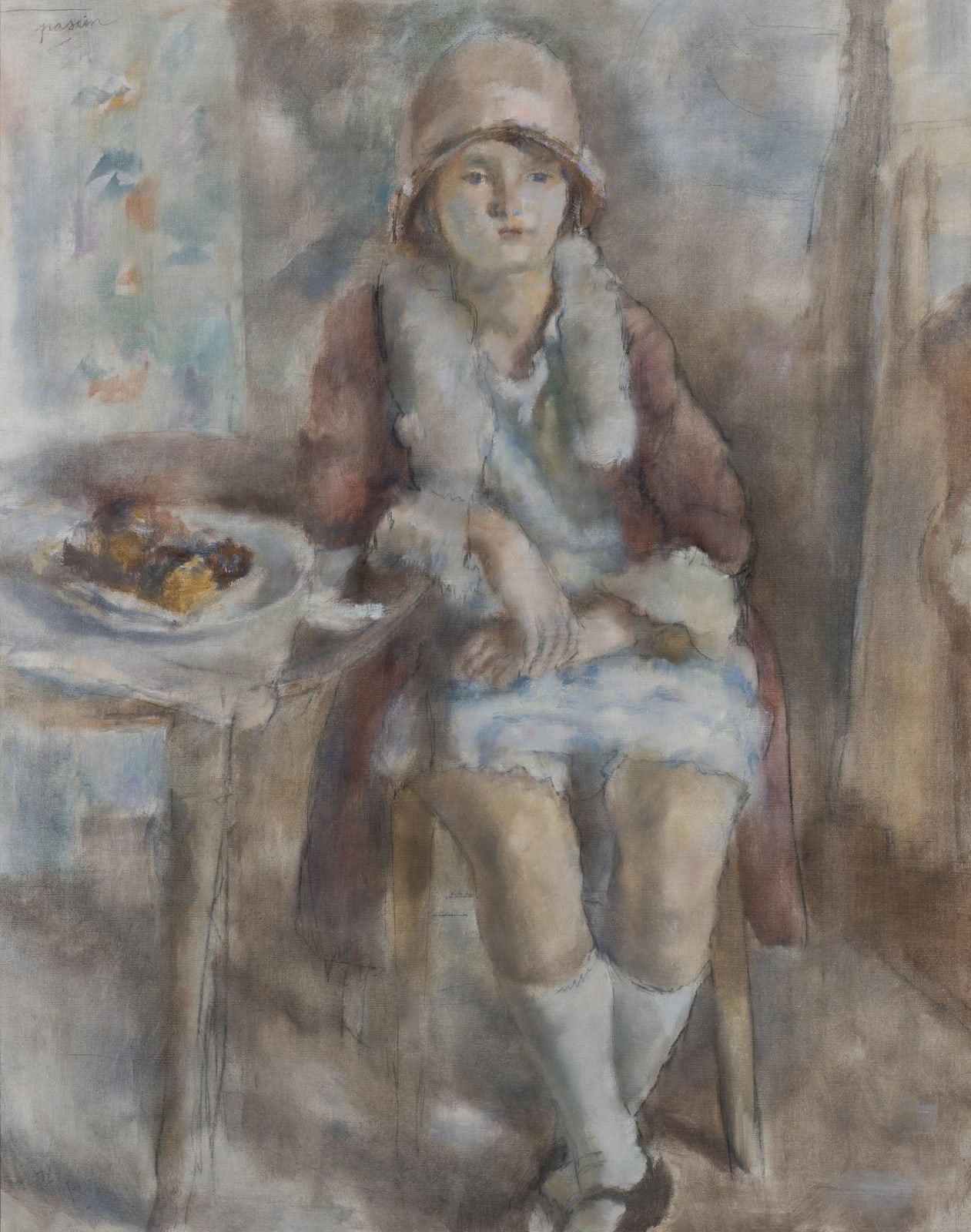Jules Pascin
Jeune fille au café , 1927
Oil and crayon on canvas
36 1/4 x 29 1/8 in, 92.1 x 73.7 cm
Signed 'Pascin' upper left
Born Julius Pincas, Pascin left his wealthy Jewish Bulgarian and Romanian financier family as a teenager to travel the world and pursue an artistic career. First working and studying in...
Born Julius Pincas, Pascin left his wealthy Jewish Bulgarian and Romanian financier family as a teenager to travel the world and pursue an artistic career. First working and studying in Vienna, Munich and Berlin, he earned a living in these early years illustrating for the leading satirical magazines of the period, ‘Lustige Blätter’ and ‘Simplicissimus’.
After settling in Paris in 1905 Pascin became a central figure in the School of Paris: the group of immigrant artists centered in Montmartre around Chagall, Modigliani, Soutine, Foujita, Kisling and Per Krohg. The circle was to become one of the most important strands in French art between the two World Wars.
‘Jeune fille au café’ is an extraordinary example of Pascin’s mature style of painting with its very complete composition, building the figure around his drawing lines. As seen in the present painting, Pascin developed a way of using oil to produce a similar appearance to watercolour. Here, the figure is delicately painted and the canvas filled with subtle glazes and hazy pastel hues. Known to push the boundaries with this semi-erotic works, Pascin did not shy away from reality. In ‘Jeune Fille au Café’ the model takes a relaxed pose with one arm nonchalantly resting on the table. With all of Pascin’s work she appears comfortable in her setting, and not idealised but a real woman with poise.
A much loved figure, on his death in 1930, many galleries in Paris closed for his funeral and thousands lined the streets in black, walking for three miles behind his coffin. The following year, major retrospectives were staged at the Downtown Gallery, New York and at Bernheim-Jeune, Paris. Pascin’s works can now be found in such major museums as The Metropolitan Museum of Art, New York; Hiroshima Museum of Art, Hiroshima and Louvre, Paris.
After settling in Paris in 1905 Pascin became a central figure in the School of Paris: the group of immigrant artists centered in Montmartre around Chagall, Modigliani, Soutine, Foujita, Kisling and Per Krohg. The circle was to become one of the most important strands in French art between the two World Wars.
‘Jeune fille au café’ is an extraordinary example of Pascin’s mature style of painting with its very complete composition, building the figure around his drawing lines. As seen in the present painting, Pascin developed a way of using oil to produce a similar appearance to watercolour. Here, the figure is delicately painted and the canvas filled with subtle glazes and hazy pastel hues. Known to push the boundaries with this semi-erotic works, Pascin did not shy away from reality. In ‘Jeune Fille au Café’ the model takes a relaxed pose with one arm nonchalantly resting on the table. With all of Pascin’s work she appears comfortable in her setting, and not idealised but a real woman with poise.
A much loved figure, on his death in 1930, many galleries in Paris closed for his funeral and thousands lined the streets in black, walking for three miles behind his coffin. The following year, major retrospectives were staged at the Downtown Gallery, New York and at Bernheim-Jeune, Paris. Pascin’s works can now be found in such major museums as The Metropolitan Museum of Art, New York; Hiroshima Museum of Art, Hiroshima and Louvre, Paris.
Provenance
L. Phillips, New YorkPrivate Collection, Philadelphia (thence by descent)
Private Collection, USA
Literature
Yves Hemin, Guy Krohg, Klaus Perls & Abel Rambert, Pascin: Catalogue raisonné, peintures, aquarelles, pastels, dessins, Vol. I, Paris: Editions Abel Rambert, 1984, no.573, p.295, illus.1
of
3
